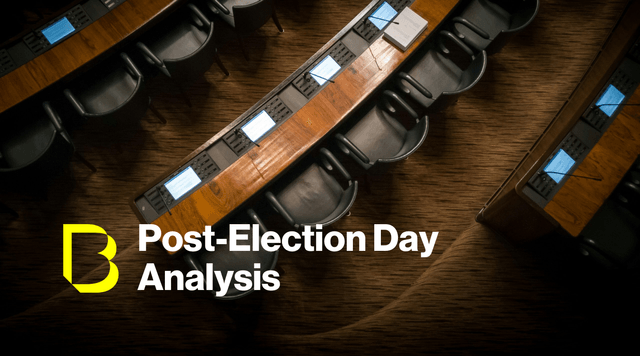The first week of the new administration created a handful of important learnings that are informing board rooms and executive suites around the world. Here are some key takeaways from last week’s flurry of activities in Washington and around the world:
- The pace of Washington has accelerated. While most companies anticipate various changes in government standards, regulations and policies, most assume they have months and years to adjust to the new normal. Like incoming presidents before him, President Trump has moved quickly during his first week in office to put his agenda into effect. Through a series of executive orders, the president is undoing the previous administration’s actions to begin implementing his electoral mandate. He has indicated that he intends to continue a fast pace of reform and change and is not going to operate by the old rules of public sector processes and protocols. For companies, the time to prepare and act is now.
- The rules of governing have de facto changed overnight. Although there are narrow Republican majorities in both chambers, neither are strong enough to withstand strong challenges from the minority, not to mention defections within the Republican conference itself. Executive orders were but the first tool President Trump and the administration will likely leverage to consolidate and advance their agenda. Funding mechanisms, taxes and tariffs, and an overhaul of government agencies’ priorities, are the next set of levers they intend to pull. Expect the ongoing Cabinet confirmation hearings to be a prelude to some of these specific agenda items.
- The playbook must be adjusted. The battleground for where issues will be fought has shifted. Global relationships are being reconsidered. Traditional battles in Washington are likely to be cast out into the states. Companies and trade associations will likely have to fight executive orders and actions in the court of law – putting the judicial branch in a rare front row seat to see a brewing battle between the public and private sector. Companies may well be on both sides of the bench, both defending their license to operate while promoting their business, so being prepared to voice interests in the court of law as well as the court of public opinion on a global scale is paramount.
- The tech industry’s moment to rehabilitate and lead. In recent history, prior administrations have had to lean on the financial sector to rehabilitate the economy and the healthcare sector to save lives through a global pandemic. Now with concerns about American competitiveness failing and the innovation divide that has occurred across the country, the tech sector is being held up as the industry to bring American into the next Golden Age – whether through AI or semiconductors. Given the prominent role President Trump has placed on the sector and its senior-most executive leaders, how the sector leads, interacts with government and plays its part in doing so may be an early indicator of the success or failure of the new administration.
Given these new realities, communications leaders must adapt their strategies and plans accordingly. Burson recommends the following:
- Double down on core public affairs best practices. Everything from deepening direct relationships with important stakeholders to building out targeted grassroots capabilities that can be deployed in real time to seeding a narrative that best positions a company for success both on offense and defense are all critical table stakes in the new environment. If these tools and resources have not been audited or reviewed since the election, now is the time to do so.
- Align and remain close to legal and regulatory affairs. Long gone are the days when a communications function is focused primarily on driving coverage for a brand to enable customer acquisition, retention and sales. Communications leaders must understand complex matters of regulatory, legal and reputation risk in today’s environment. Building and maintaining close working relationships with in-house legal, risk and compliance experts is necessary. Hiring public affairs communications professionals on your teams or retaining firms with this expertise can also help bridge gaps in understanding between these sometimes disparate functions and develop mutual goals on behalf of the business.
- Focus on policy, not politics. It is more important than ever to ensure that all communication regarding policy matters stays focused on the policies themselves versus being pulled into politics or political debates. Communications should clearly articulate the distinct business, economic and social advantages of a position taken by your company and draw direct lines between a policy and its benefits or harm to your key stakeholders.
- Adopt (or maintain) a stakeholder-oriented approach. Speaking of stakeholders, communicating with all relevant audiences on a variety of topics remains a critical priority. Strategically mapping stakeholder concerns and adapting messaging to ensure consistency but customization are important and effective steps to take to manage your business and reputational priorities. Investors, government officials, employees, advocacy organizations, partners, and more, will expect – if not demand – a consistent flow of information and transparency regarding your policy positions and priorities.
- Use AI and data to inform communications. The 2024 election revealed a rapidly evolving media ecosystem characterized by the declining influence of traditional media, the growing importance of politically aligned mega-influencers and the rise of alternative platforms like Bluesky and Threads. Communicators must understand these shifts and how to best manage them using data and AI as the landscape continues to evolve. Rigorous and tested predictive tools, such as Burson’s Decipher and Sonar capabilities, are the new table stakes for getting ahead of issues and shifting from being on a reputational back foot and to beginning to build and earn Reputation Capital.
You might also like
Explore all
Amid disruption, C-suite leaders have the power to steady their workforces

Post-Election Day Analysis

November 1, 2024: State of the Race

